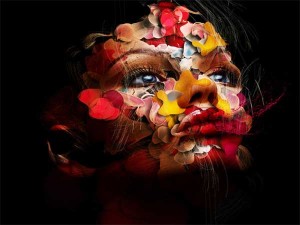
The displays of issues that arise in different disciplines are essentially insightful about matters of synergy and creativity in arts and aesthetics in the age of rapid technological development.
Today,the fate and prospects of humanity are under the influence of technology. Technology represents a mode of means-ends thinking that allows us to direct material to a given end and these conditions apply to the contemporary age.
Although in ancient times scientific and technological knowledge was often presented in form of poetry,modern scientists,engineers,and writers tend to think of their enterprises as fundamentally different and perhaps even diametrically opposed.
In contrast to the modern tendency to place in opposition to one another two dominant spheres of knowledge,science and technology over against the humanities and the arts,the Greek notion of techne suggests that technique and art need not be viewed as exclusive poles.
There are five virtues of thought:technê,episteme,phronêsis,sophia,and nous. Various translations have been offered for each of these terms. Most often,technê is translated as craft or art. While epistêmê is generally rendered as knowledge,in this context,where it is used in its precise sense,it is sometimes translated as scientific knowledge Techne means both art (literature) and craft (i.e. technique). For the Greeks the artist was a craftsman,shoemaking was an art,and sculpture was a technique. For Plato no distinction existed between the fine and mechanical arts.
This connection is widely characteristic in the pre-modern world. It is well-known in drawing and painting,where perspective,anatomy,and geometrical proportions assumed great significance;as a result for Leonardo da Vinci art and science were one and the same. A shift occurs in isolated cases in the sixteenth century,then it was boosted by the scientific revolution in the 17century and became widespread by the end of the 18th cent. Art and technique no longer serve the same purpose but develop independently and autonomously. Technology becomes aligned with science and industry,while art develops stronger ties to the humanities.
Technology in a broader sense is the elevation of technical reason,and overemphasis on the technical and especially the instrumental creates an imbalance in relation to other values and relations toward other human beings.
In the age where use of technology empowers us to control others,we need the experience with something that is not purposive in a quite the same way. When we appreciate the object of beauty,we do not desire to posses it or transform it,to consume it or use it;we leave it free as it is. As something aesthetic,the object is a combination of the affective and the spiritual,as it fits for thought. This preservation of the aesthetic as what is essentially valuable neither to be consumed nor to be left behind makes it valuable as the counter-force to the instrumental,giving it a privileged position within the organic field of human activity in general and especially today.
Art works are unique. Already Kant recognized that simple understanding is not capable of exhausting the essence of art or humanity. Too much technology and too little art make the transfer of technical categories to humanity all too dangerous.
Science and technology are universal;their laws are precise and firm;arts and literature are diverse,variable,and singular. Technology is primarily oriented toward the general,not the individual,toward mass production,not uniqueness;technology is not especially culturally bound,nor do the laws of efficiency normally allow it to generate unique products. In arts,on the other hand,we gain greater sensitivity to what is singular,not only the art work and the human being but also,by analogy,the unrepeatable nature of the world which is trust,not something we own eventually in our private subjectivity or something we can destroy.
The coming of computer-based information technologies with their emphasis upon process,system,and code has enabled artists to perceive that they function as forms or subsets of information technology.
Creativity is in fact possible in any activity that engages our intelligence,because intelligence itself is essentially creative. Creative processes are rooted in the imagination and our lives are shaped by the ideas we use to give them meaning. We all have creative capacities but in many instances we don’t know what they are or how to draw upon them.
Technology is creative,as well as arts and literature. Commonalities exist between them,as ancient and medieval thinkers believed,and the spheres are enriched when interaction and reflection surface in both directions.